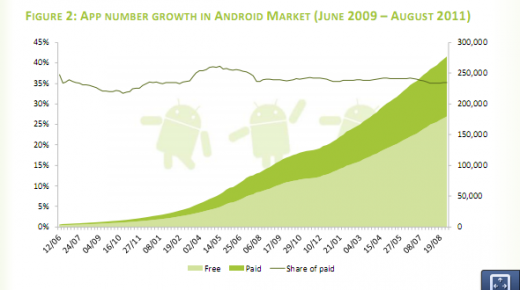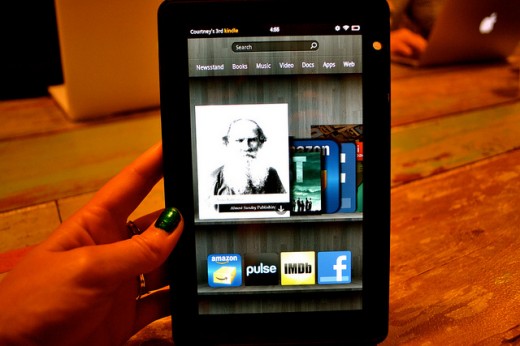“So much work goes into producing the UI and the changes that you make, and then typically what happens is that the OEM’s put their skins on it and put their own touch. Does it bother you that so much work goes into it and in the end, a lot of consumers don’t interact with the UI as you intended it?”Great question and one that many like us here at Talk Android would have asked as well. Read on for Duarte’s response and follow-up after the break.
Here’s a transcript of Duarte’s response to Kameka:
“Well, it would bother me more if we didn’t have programs like the Nexus program. The idea behind the Nexus device is to do exactly that – to give consumers an option to use the baseline work that we do if they choose…the philosophy of Android, the idea that partners can customize Android if they want to, is really important to making Android successful.So basically Duarte’s response is straightforward. Android customization is welcome because that’s what the purpose of Android is all about– the choice of having different variations of the OS. However, he makes it clear it would bother him more if they didn’t have more pure Android programs– like Nexus programs. There needs to be a balance between having the original intention of Android and the “enhanced” experience that OEMs provide. Moreover, he praises the fact that ASUS specifically has turned on the ability to turn off the customizations and revert to the stock Android (Honeycomb) UI— which is something I personally believe most (if not all) Android users would welcome with open arms.
I think as we see more and more of the basic UI, the basic operating system – the home screen, the notifications system – kind of meet all of the needs that the customers want, you’ll see that OEM’s invest less time trying to fill in the features maybe that were missing there and more time adding completely new features to differentiate each other. Or taking the baseline Android experience and trying to transform it to create something completely different that is more of a niche product like the Kindle Fire.
And I think that’s good; I’m excited for that future. i hope that with Ice Cream Sandwich, we’ve done a lot to deliver that baseline so that OEM’s are going to feel less like they need to fill in the holes that Android left behind and actually focus on adding value…I think with the new Asus Transformer [Prime], you’ll see that the level of customization they’ve provided on top of the base Android is much less than has been provided in the past. In fact, they even allow you to turn off all of their customizations and revert to the stock Honeycomb UI, which I think is a really cool development, too.”
In addition, Google’s end goal is to make Android available to as many users as possible. That means keeping in mind Google’s strategy for working with OEM’s to fulfill their pledges to update their devices within the 18 month period, “as well as keep versions released closer to what OEM’s want to build”. Again, the end picture is while Google can’t succeed at having the pure Android build on all devices because it won’t appeal to everyone– Google must rely on the OEMs to “enhance” the Android experience by providing their personal touches in order to reach as many users as possible.
Duarte closed the enlightening discussion by sharing his thoughts influences from both the custom ROM community and OEMs. Keep in mind he doesn’t personally follow the Android custom ROM scene:
“We always look at whatever [manufacturers] launch but we have to kind of keep ourselves very firewalled. We don’t want to show them what we’re doing before it’s ready and they don’t want to show us what they’re working on before it’s ready. It’s really important for the community to kind of have an even playing field. [Ed. note - that will become critical if the Motorola acquisition is approved]Simple sum up– take something basic and make it better. That’s the story of Android and how it goes round and round. Google may learn from the custom ROM community & OEMs and vice versa. Very interesting discussion indeed. While the Android UI team isn’t particularly concerned about the growth of custom UI skins, it’s still no-secret that the general Android community would do without. Be sure to check out the full audio of the Hangout below. You’ve heard some thoughts on what the big guys for Android development think, but we’re curious to see your thoughts as well. Share your comments and thoughts in the Comments section below.
Individual designers, product managers, and engineers maybe follow one particular mod or OEM more than others, so that becomes part of the gestalt of different ideas that are out there.
It’s always exciting to see when somebody does something really cool, really interesting, and really different. One of the designs practices that we have is that when you start a a new design problem, stop and think, “Ok what’s the obvious way to do this?” And then just challenge designers and engineers to say, “Ok, technology aside – assuming that there’s no limit – what would be the coolest way to do this? What would the most compelling, fastest way to do this?” And let’s see what that would look like the way that nobody else has done this before and then let’s see how close we can get to that.”
Daily Beast Hangout audio







 11:52 PM
11:52 PM
 Simranpal SIngh
Simranpal SIngh












